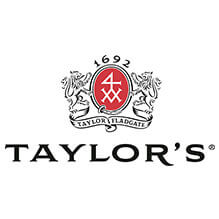
Managers bear several responsibilities, one of which is to ensure that their team remains engaged and motivated. However, keeping up with the ever-changing employee engagement needs can be challenging. Further, with an array of tools available on the market, opting for the right technology can be a daunting task. Fortunately, there are some tried-and-true employee engagement tools for managers to improve productivity and performance.
Employee Engagement Tools for Managers: How to Keep Your Team Engaged
Employee engagement plays a pivotal role in increasing productivity, boosting morale, and creating a positive work environment. To accomplish this, you need access to the right tools and resources that will help you stay on top of employee engagement initiatives. Here are some of the top employee engagement tools for managers.
1. Performance Management Software
Performance management software allows managers to track employee performance in real time. This helps identify key areas of improvement and address the challenges employees face with particular tasks or goals. Such software also enables managers to provide prompt, accurate feedback and take corrective action when necessary. Additionally, performance management software allows teams to set objectives and measure progress against those objectives – giving them greater insight into their performance and setting realistic goals for future success.
2. Gamification Platforms
Gamification platforms are becoming increasingly popular among businesses looking for ways to engage their workforce in a fun yet effective way. These platforms allow teams to compete against each other through various game mechanics such as points, rewards, or levels – creating an atmosphere that encourages collaboration and provides an incentive for good performance through recognition or rewards programs.
3. Collaboration Tools
Collaboration tools allow teams from different departments or locations to communicate quickly and conveniently without physical meetings to discuss or resolve issues. This allows everyone involved in the project to access information from any location with just one click.
4. Feedback Systems
Feedback systems enable managers to receive anonymous feedback from their employees on various aspects, such as job satisfaction levels and working environment issues. This helps them better understand what needs improving within their organization’s culture and processes. With these insights, they can proactively improve overall employee efficiency by making the required changes.
5. Learning Management Systems (LMS)
Learning management systems enable employers to deliver online training courses directly through web interfaces. You can save time and costs by eliminating travel costs associated with physical workshops or training sessions. This also enables individual staff members to access content at any given time and learn at their own pace while keeping up with company standards.
6. Artificial Intelligence (AI)-Powered Chatbots
Automation is one of the most lucrative technologies that can speed up an organization’s operations. AI chatbots enable businesses to automate customer service inquiries by answering questions related to products or services. Therefore, they free up valuable human resources, which would otherwise spend hours responding manually. They also give customers round-the-clock access to support without waiting for long durations due to high call volumes or waiting queues during peak times.
7. Social Media Platforms
Social media platforms offer great opportunities to engage current and potential customers via posts and updates about company news events. You can leverage social media to build relationships not just between business owners but also among existing or prospective customers. Additionally, such networks provide invaluable data insights through analytics dashboards and help you understand customer preferences and buying behaviors. This, in turn, can be useful in crafting more effective marketing campaigns.
8. Mobile Apps
Mobile apps are equipped with features like push notifications and direct messages. This can be put to use to remind users about upcoming deadlines, tasks, and projects, even when they’re away from their desks. So employees won’t miss out on vital information relevant to them. This provides great convenience, especially for those working remotely, by eliminating the need to constantly check email notifications.
Conclusion
Employee engagement is critical in today’s competitive marketplace. While it is a bare minimum to ensure employees are satisfied, organizations need to step up and motivate them. By doing so, employees contribute actively and readily towards achieving organizational goals. By utilizing the right combination of the employee engagement tools mentioned above, managers give themselves the best chance at succeeding in keeping their team engaged and motivated at all times.





















